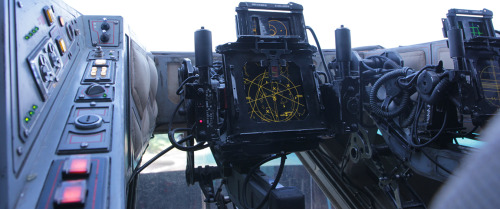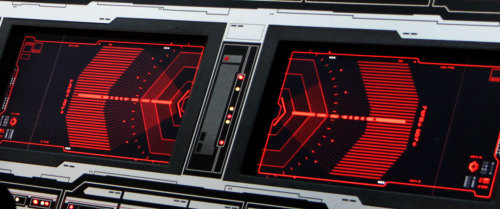#hyperspace
Last one of these I promise
Beamin
Hyperspace where it’s impossible to get rid of waste heat, so temperature is the only limiting factor in how far you can go in it. Has that idea been done before? It has to have been, right
trying to sleep on a cold night with an insufficiently breathable blanket…
push the ship beyond its normal limits by getting it dangerously cold before setting off
ships tailored for hyperspace travel that must be built in space and must never dock on a planet to accommodate their massive heat sinks
like depending on just how much speed you gain from hyperspace, literally like have a giagantic cruiser loaded with cargo and landing ships and whatnot, but use a high delta v/low impulse/low waste heat engine like an ion drive or something (with more conventional rockets for maneuvering in normal spacetime), and then take that to be like 1% of the mass of the ship or something, just have a gargantuan block of tungsten block loaded with heat pipes and connect that to heat pumps on the ship
actually maybe make the heat sinks detachable, assuming you have accurate and precise enough control of your exit velocity from hyperspace to land in orbit then you wouldn’t have to waste any fuel lugging it around in normal spacetime, then you could actually closer approaches or maybe even full docking with the cruiser. If not then maybe just have these cruisers being managed like a continuously operating public transit instead, exiting hyperspace in hyperbolic orbits where passenger ships can dock and undock before it sets off to the next stop. It could either shed heat at each stop along with refueling or have the heat sink, routing, and fuel tanks calibrated to eachother so that it can dump all its excess heat and refuel only during service stops
you could have one get stranded in uncharted interstellar (or worse, intergalactic) space because some terrorists brought on a cargo ship entirely loaded with thermite on the last stop before end-of-line and set it off during travel, triggering an emergency hyperspace dump when the heatsink neared capacity
There would also be a strong incentive to only ship materials which are relatively temperature insensitive, like bulk metals or whatever, and certainly not living organisms. That’s not interesting though. If anything it makes the idea less interesting.
You would want your ship to be as massive as possible, and full of phase change materials to dump waste heat. Water ice is extremely good at this. Melting ice can absorb 80 cal/g (and liquid water has the highest specific heat/mass other than hydrogen), so the more ice mass you have available, the more heat it can store.
You would also want to lace the heat sink structure with something highly thermally conductive. If you don’t have a thermal superconductor, diamond will do. It’s important that the entire heat sink rise in temperature at as close to the same rate as possible. However, you may need some regions to be at least partly isolated from the rest of the structure, such as the H-core itself. In that case, you may rely on circulating water to keep the system cool, with the water linked to a separate ice bank. This way, you can potentially allow the H-core to get a lot hotter without frying the crew.
There will of course be a balance - more mass can absorb more heat, but may take more energy to jump through hyperspace. There will be a minimum point. And the bulk of research will be devoted to allowing larger masses to be carried more efficiently.
I’m also interested in why you might be unable to dump waste heat in hyperspace. No matter the properties of hyperspace, matter should still emit black-body radiation, reducing its temperature over time. But maybe “hyperspace” as it’s usually conceived of, an additional dimension of spacetime with shorter paths relative to normal space, is the wrong idea. Maybe FTL is being accomplished through some kind of small spacetime bubble, one which has the properties of a very small closed universe: infrared radiation emitted by the ship doesn’t travel very far before it’s absorbed by the ship coming from the other direction, and the ship has to constantly output power to maintain whatever negative energy field is necessary to keep this pocket universe from simply collapsing immediately.
This would be different from a warp bubble because warp bubbles remain embedded in the space-time they travel through, IIRC, and radiation emitted from the ship passes into the normal universe once it reaches the walls of the warp bubble.
what this whole premise makes me think of is that if you can go in and out of hyperspace, and the main drawback is that it takes a long time to cool off once you exit, you could set up relay stations where you drop out of hyperspace at a station, quickly swap out a superheated heat sink for a cold one, and then get moving again, and the stations are basically just big banks of heat sinks maintained with a skeleton crew
anyway I like this idea because it basically just ends up being the Pony Express except with imperial star destroyers
In some ways it feels like the situation as it exists with fuel in STL space travel, i.e., a limited supply of something (in this case, cold heat sink) you need to make your spaceship go, with similar constraints on expanding the frontiers of your SF setting. But it also means that even in the worst case scenario (as long as you have STL fuel, I guess) you can’t get stranded too far out, as long as you can wait for your heat sink to radiate away energy in normal space for a while.
It’s definitely great as a technobabble thing, bc it’s also pretty easy for an audience to understand, and it imposes clear rules with interesting consequences on your story. In places with built-up infrastructure and lots of heat sink swapping stations, travel is much quicker even with the same kind of ship, while beyond these core systems travel is going to be a lot slower and more dangerous. If the heat sink is an abundant material like ice (or an abundant material like ice can be used) you also have natural sources that can figure into your story in interesting ways.
I wonder if an advanced culture could incorporate black holes into their heat sink design. The heavier a black hole, the lower its temperature, and by dumping hot matter into a black hole you’re only cooling it further. That heat sink bulk is lost permanently, but maybe it would be a way to dump heat in an emergency–swap out the heat sink for a backup, dump the hot one into the onboard black hole–that would allow you to maintain FTL speeds for longer. if my arithmetic is right, a black hole of “only” around 9.436*10^22 kg, a hair more than Io, is right around 4 degrees Celsius, perfect to keep your spaceship running smoothly and your beer cold.
Also it would be useful if you could make ships that could land on planets or asteroids, since you can lose heat much more quickly there than in a vacuum. At least for like warships, where you can afford the extra complexity and risk in exchange for time - maybe risk in the form of having to exit hyperspace close enough to large objects that you can get there quickly, dump heat, and take off again, but also not jumping into the middle of the object and causing a huge explosion that kills everyone. Would require accurate charts across a huge number of solar systems, and greater knowledge of small objects would let you travel through an enemy’s space undetected, because they might not know which objects to monitor.
In response to @tanadrin, I would add a second constraint: heat storage (here, you cannot radiate in hyperspace) is separate from fuel requirements, with a couple of rules:
1) The energy required to enter hyperspace is a lot higher than cruising. This limits the ability to just keep dropping out to cool. Unless you have very specialized ships, it is generally preferential to use dedicated launching platforms in orbit of transit hubs.
2) Higher cruising rates use fuel disproportionately faster. So it is economically preferable to cruise slowly, similar to low-speed shipping today.
3) (maybe not needed here) Hyperspace travel doesn’t convert fuel to heat in an obvious way.
The combination of these two means that the most economical long-haul methods are to launch into hyperspace as few times as possible, since dropping out and relaunching is quite expensive, even at a launch facility. Which is why effort needs to be devoted to ensuring that the ships can keep themselves cool and running during long runs. (The analogy, then, is to food supplies aboard sailing ships.)
Hyperspace where it’s impossible to get rid of waste heat, so temperature is the only limiting factor in how far you can go in it. Has that idea been done before? It has to have been, right
trying to sleep on a cold night with an insufficiently breathable blanket…
push the ship beyond its normal limits by getting it dangerously cold before setting off
ships tailored for hyperspace travel that must be built in space and must never dock on a planet to accommodate their massive heat sinks
like depending on just how much speed you gain from hyperspace, literally like have a giagantic cruiser loaded with cargo and landing ships and whatnot, but use a high delta v/low impulse/low waste heat engine like an ion drive or something (with more conventional rockets for maneuvering in normal spacetime), and then take that to be like 1% of the mass of the ship or something, just have a gargantuan block of tungsten block loaded with heat pipes and connect that to heat pumps on the ship
actually maybe make the heat sinks detachable, assuming you have accurate and precise enough control of your exit velocity from hyperspace to land in orbit then you wouldn’t have to waste any fuel lugging it around in normal spacetime, then you could actually closer approaches or maybe even full docking with the cruiser. If not then maybe just have these cruisers being managed like a continuously operating public transit instead, exiting hyperspace in hyperbolic orbits where passenger ships can dock and undock before it sets off to the next stop. It could either shed heat at each stop along with refueling or have the heat sink, routing, and fuel tanks calibrated to eachother so that it can dump all its excess heat and refuel only during service stops
you could have one get stranded in uncharted interstellar (or worse, intergalactic) space because some terrorists brought on a cargo ship entirely loaded with thermite on the last stop before end-of-line and set it off during travel, triggering an emergency hyperspace dump when the heatsink neared capacity
There would also be a strong incentive to only ship materials which are relatively temperature insensitive, like bulk metals or whatever, and certainly not living organisms. That’s not interesting though. If anything it makes the idea less interesting.
You would want your ship to be as massive as possible, and full of phase change materials to dump waste heat. Water ice is extremely good at this. Melting ice can absorb 80 cal/g (and liquid water has the highest specific heat/mass other than hydrogen), so the more ice mass you have available, the more heat it can store.
You would also want to lace the heat sink structure with something highly thermally conductive. If you don’t have a thermal superconductor, diamond will do. It’s important that the entire heat sink rise in temperature at as close to the same rate as possible. However, you may need some regions to be at least partly isolated from the rest of the structure, such as the H-core itself. In that case, you may rely on circulating water to keep the system cool, with the water linked to a separate ice bank. This way, you can potentially allow the H-core to get a lot hotter without frying the crew.
There will of course be a balance - more mass can absorb more heat, but may take more energy to jump through hyperspace. There will be a minimum point. And the bulk of research will be devoted to allowing larger masses to be carried more efficiently.















